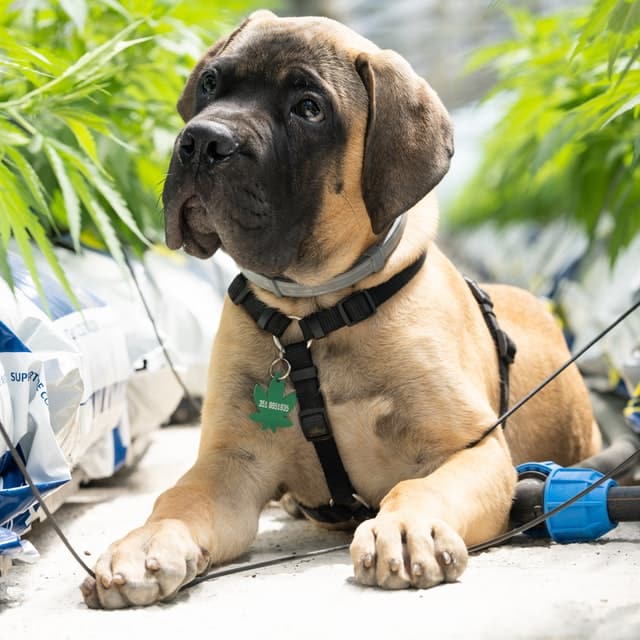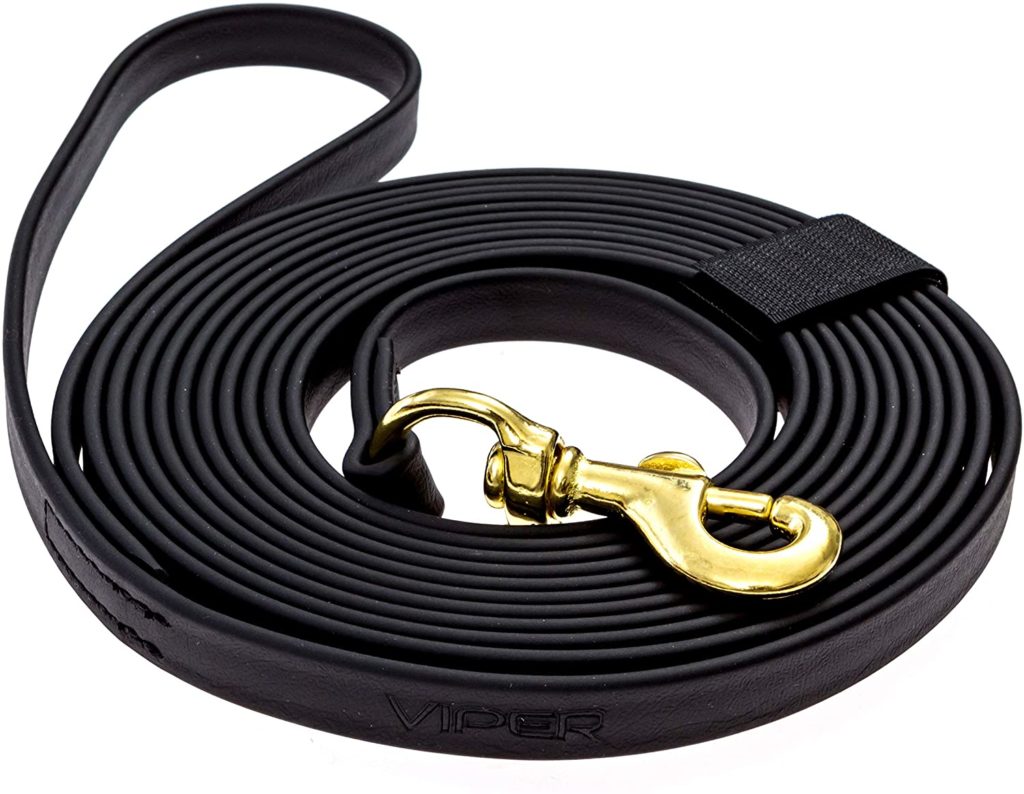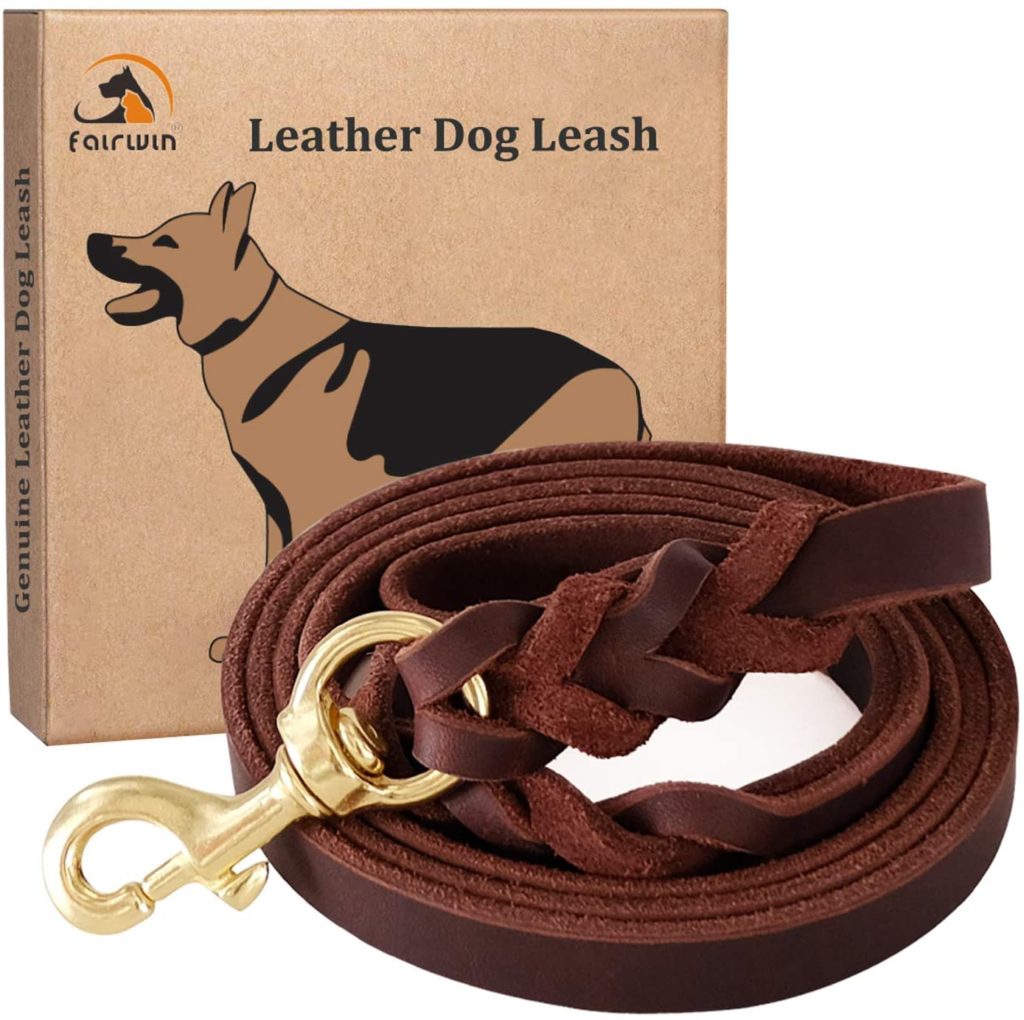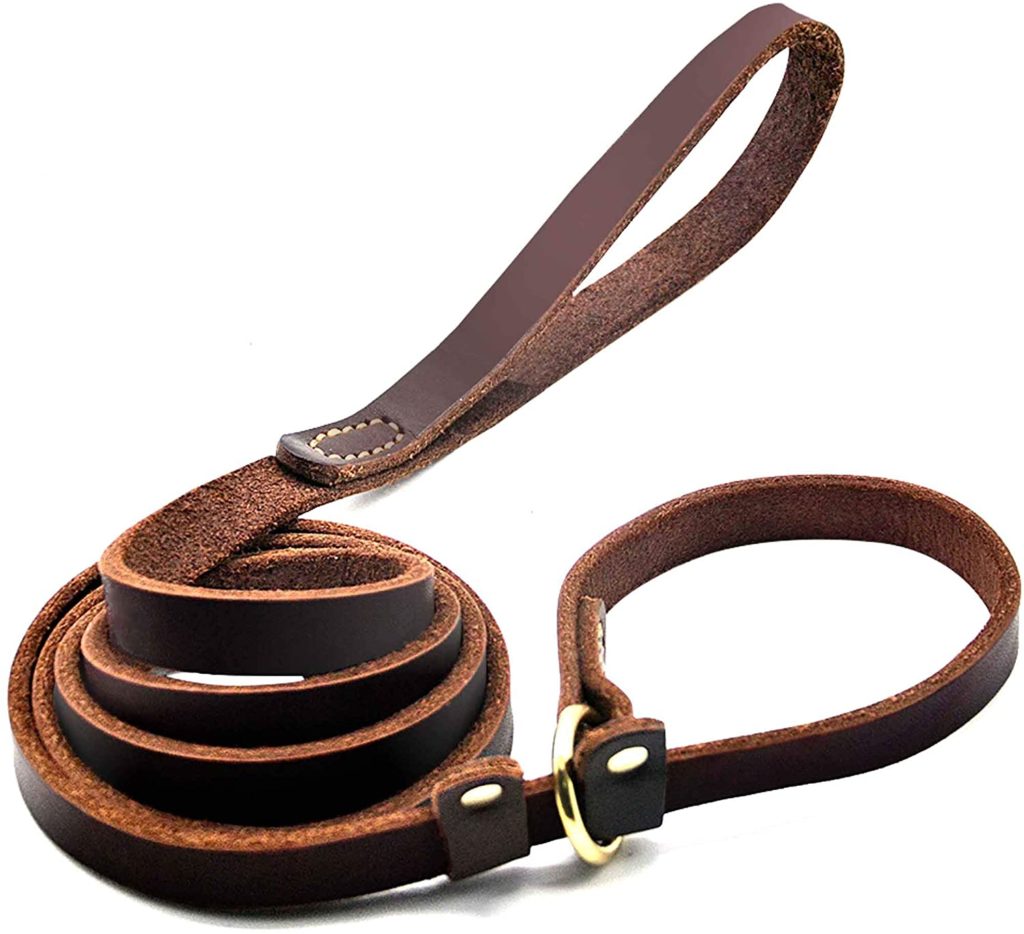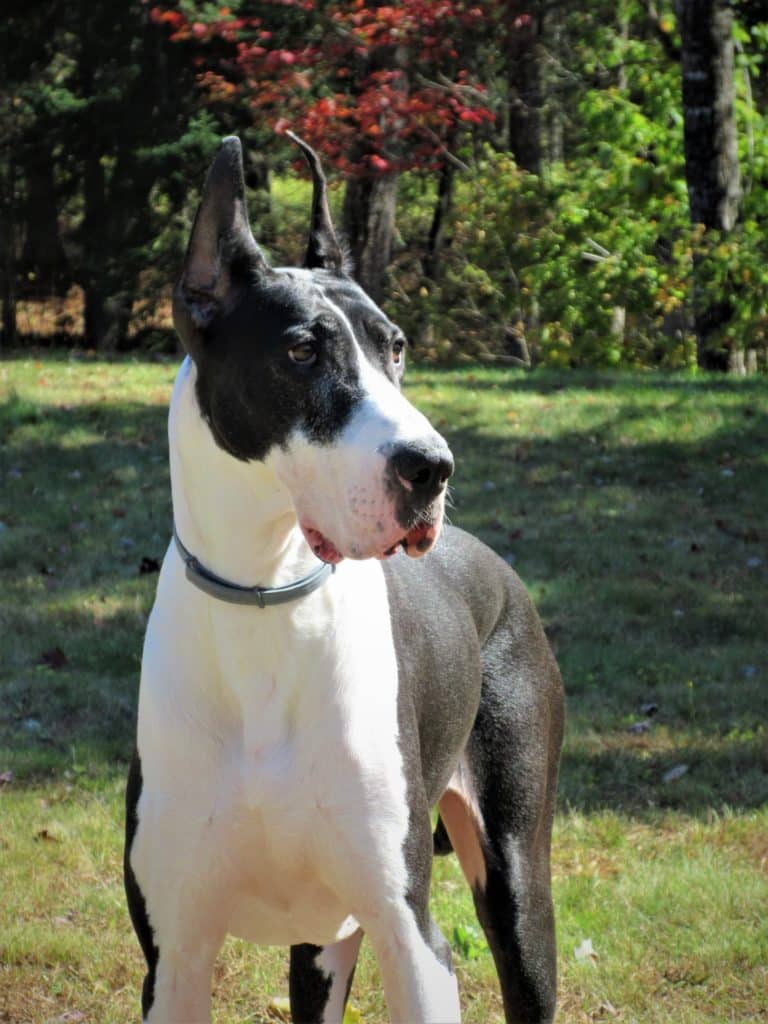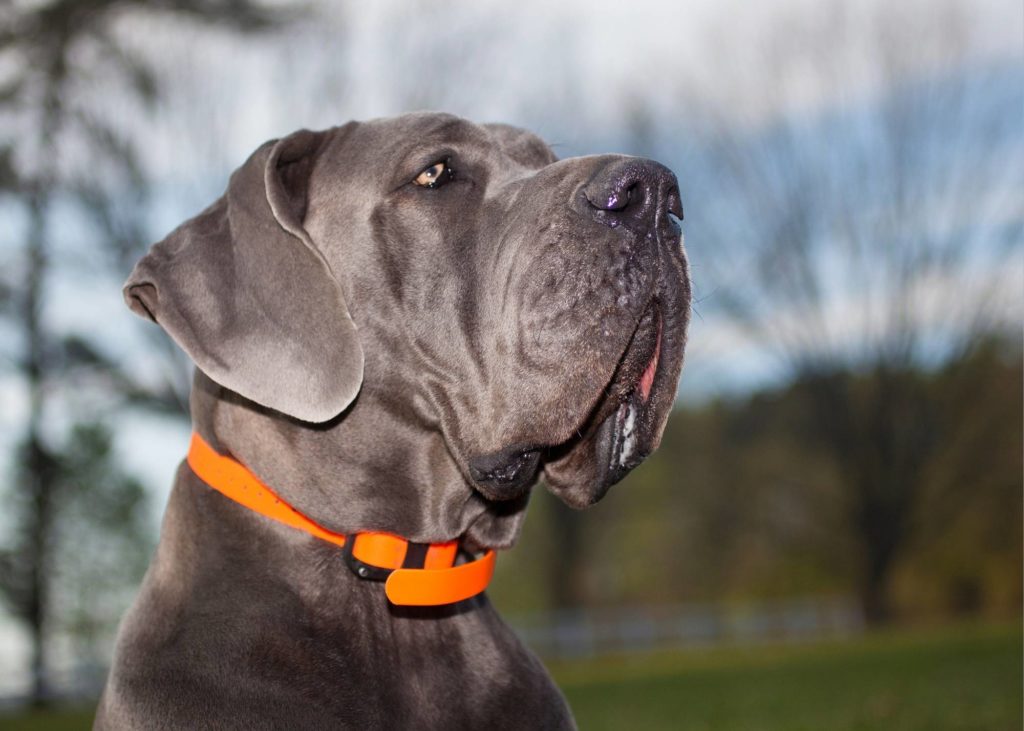The Best Leash for Great Danes
A proper leash for a Great Dane will be well-made, sturdy, and have a substantial solid metal clip on it. The last thing we want is for our giant breed dogs to get loose and run off because their leash breaks!
Inexpensive nylon leashes with plastic clips can easily break, setting your dog free to run and cause havoc off-leash!
Talk about embarrassing (hey, many of us have been there)!
The Best Leashes for Walking a Great Dane
Once your Great Dane has excellent walking skills and does not pull you around, lunge, or react, we recommend walking your Great Dane off-leash (with a positively-implemented E-Collar) and/or on a 6-8 foot leather leash connected to a flat or Herm Sprenger Prong collar.
Leather wears well, is easy to clean, feels nice in your hand, and will often be more sturdy and well-made than an inexpensive nylon leash.
PRO TIP: Buy a set of leather horse reins from the farm store and add a substantial clip to each one. If your Great Dane pulls, it’s so important to have peace of mind that your equipment is solid.
When your Great Dane is trained to walk nicely and be 100% responsive to you while off-leash, the leash becomes nothing more than an extra item your dog will wear on walks only because it has to be there for leash laws.
While off-leash obedience training is the gold standard, some Great Dane dogs require more control than others.
For dogs that aren’t there yet or that may be dangerous and require additional control, a sturdy leash is a must!
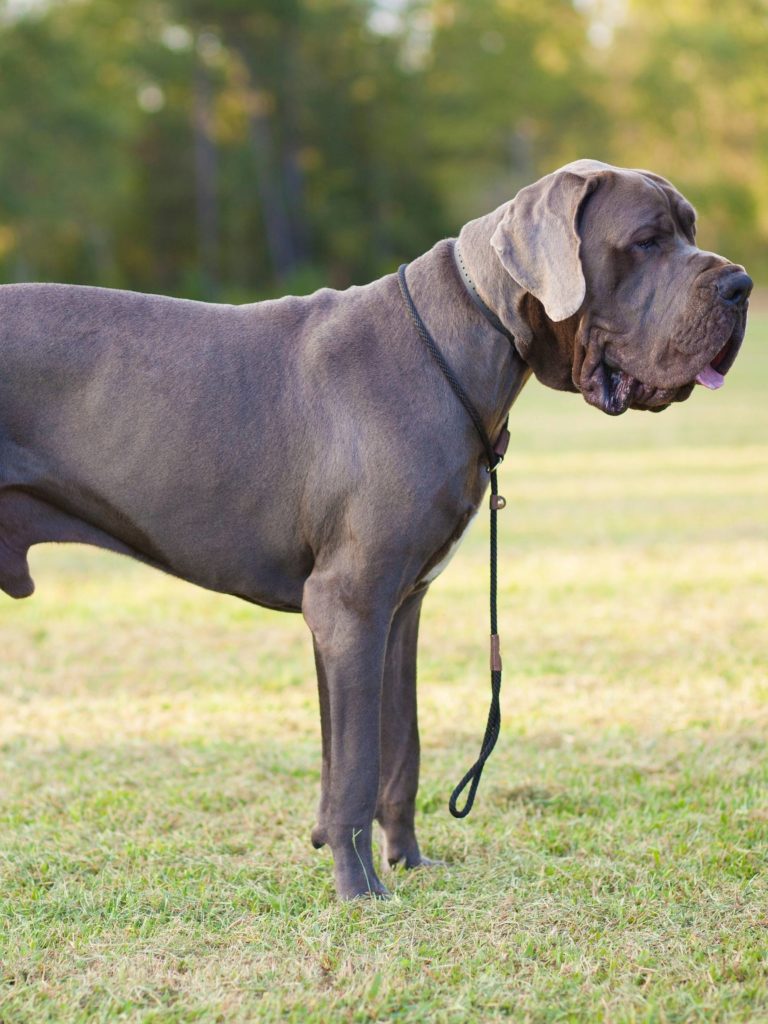
The best leash for training sessions
We recommend a sturdy 4-8 foot leather leash for training sessions.
The ideal collar for a Great Dane is either a martingale or a prong collar. Flat collars are only for dogs that do not pull ahead or lunge.
Headcollars (also known as ‘Gentle Leaders’ or ‘Halti’) often work ‘quickly’ but many dogs find them aversive and frustrating. We don’t recommend them for a number of reasons.
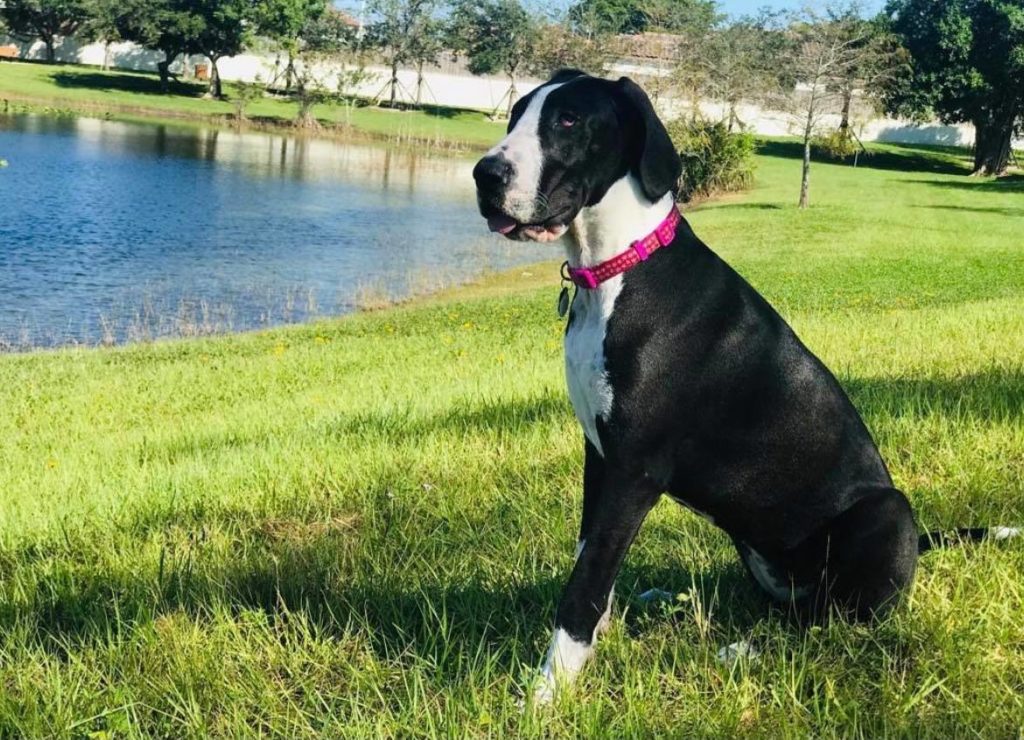
The Best Training Collars for Great Danes
A Herm Sprenger prong collar is our tool of choice for teaching Great Dane dogs how to politely walk on a leash. While a prong collar may look like a torture device, it is actually one of the most gentle and clear ways to communicate with our gentle giants!
Prong collars work by applying gentle, even pressure to the neck when the dog pulls ahead or lunges. A good training program will utilize positive reinforcement to teach the dog that this pressure is something they can control and easily get rid of by turning back towards you as the handler.
This ability to control the sensation from the collar is very rewarding and empowering to dogs!
This pressure is a deliberate and clear yes and no communication that can result in an incredible transformation for dogs that lunge, pull or struggle to focus around little distractions.
A properly used, high-quality prong collar such as the Herm Sprenger will not pop a balloon.
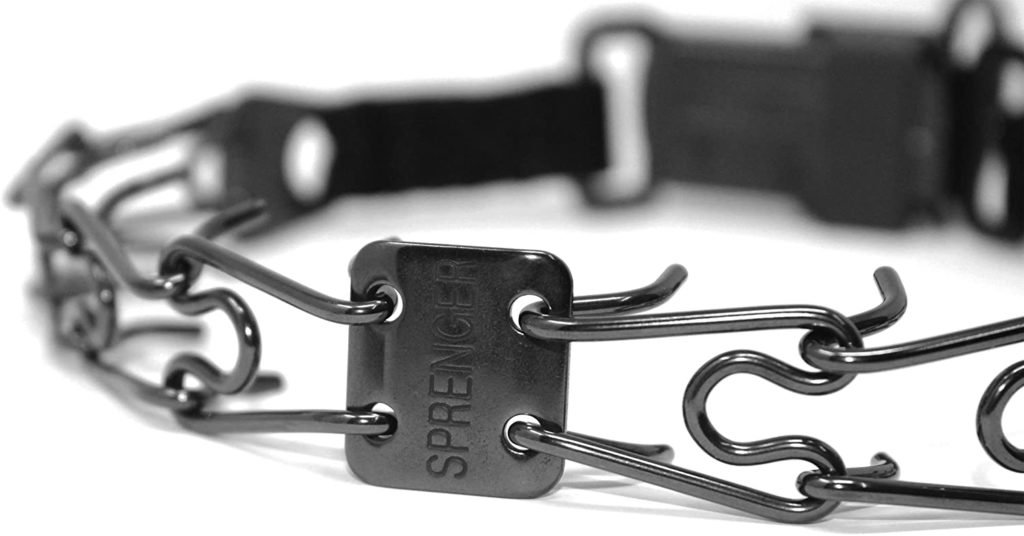
We do not recommend using any kind of training collar on a puppy, however.
Prior to 5-6 months of age, a lot of time should be spent first teaching the correct position (heel) and loose leash skills by utilizing positive reinforcement in low-distraction areas. This will set your pup up for success and ensure that your training efforts utilizing a prong collar on your more mature dog are much more effective!
Basically put, if you wait until your Great Dane puppy is pulling before you start leash training, you’re making a huge mistake.
The best leash for recall training
Training recall should be fun! If you want your Great Dane to consistently come when called, you need to first prevent your Great Dane from running away (and practicing that behavior on repeat).
A long line leash is a must for recall training (whether you are using an E-Collar or not!).
We recommend choosing a 15-30 foot Biothane leash (our favorite is below).
Biothane is waterproof, stink-proof, and easy to handle. Plus it comes in super fun colors! Your Biothane leash can last a lifetime, too.
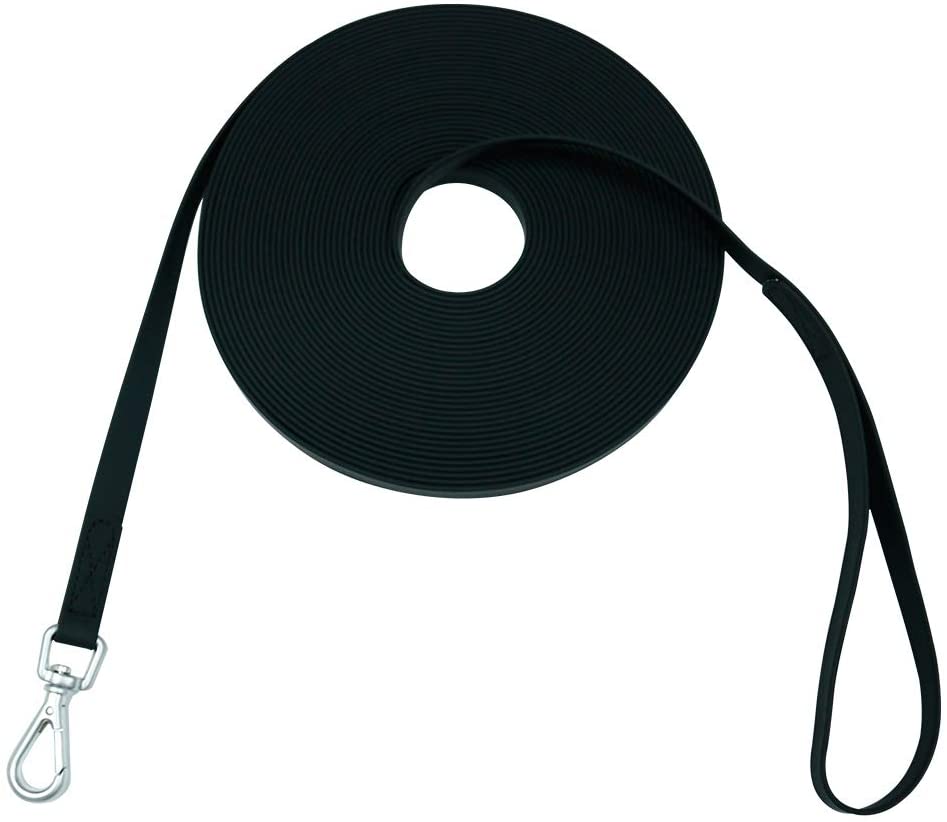
When teaching your Great Dane to come when called, use lots of positive reinforcement. Start small, just a few steps away, and say ‘COME!’. As soon as your pup starts towards you, say YES and then deliver treats, praise, play, or fun.
Gradually add distance, distractions, and duration. Make sure to occasionally grab the collar, reward, and release so that your pup doesn’t accidentally learn that coming to you and having the collar grabbed always means the fun is over.
Never scold your dog for ignoring your recall command. That’s the fast track to making sure that your pup NEVER comes when called.
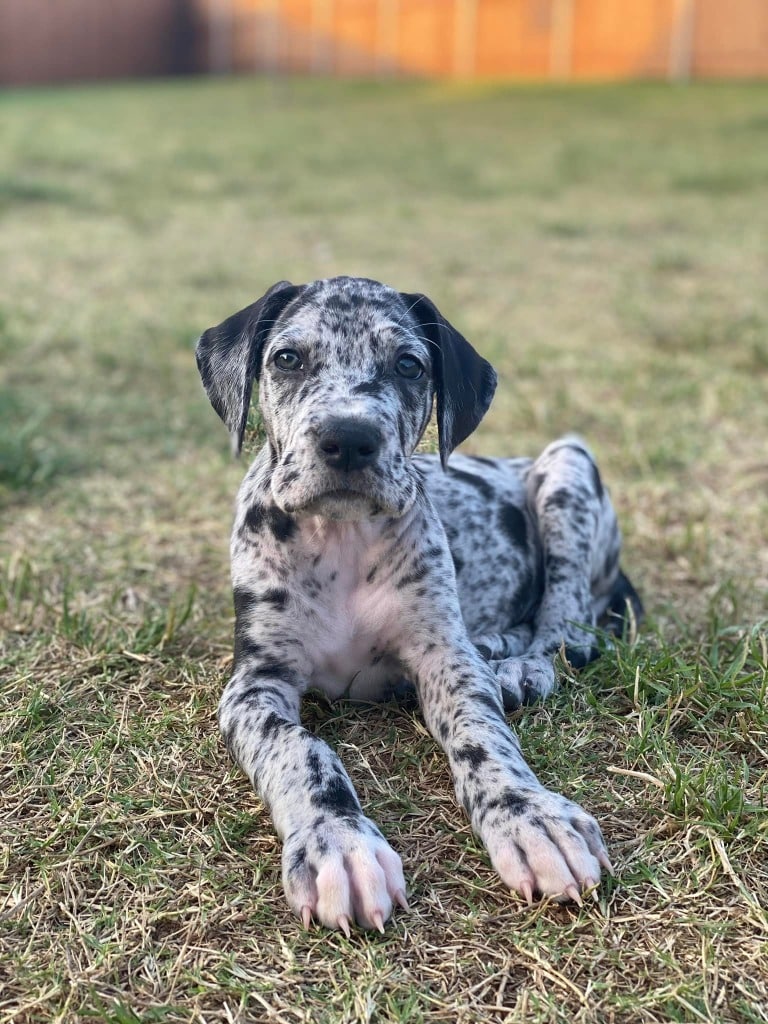
Slip leads for safety
We believe all Great Dane parents should keep a few inexpensive slip leads on hand. Slip leads are escape-proof and fantastic for new rescue dogs, puppies, dangerous dogs and when you need a leash and collar combo QUICK!
Keep one for each dog in your home in your coat closet; this way you’ll always have access to something in case of fire or otherwise. Keep some in your car, too.
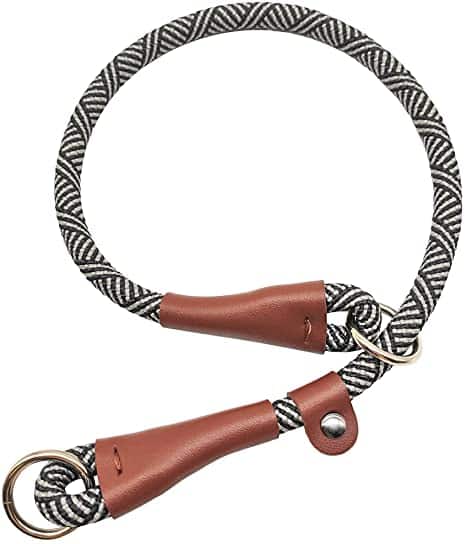
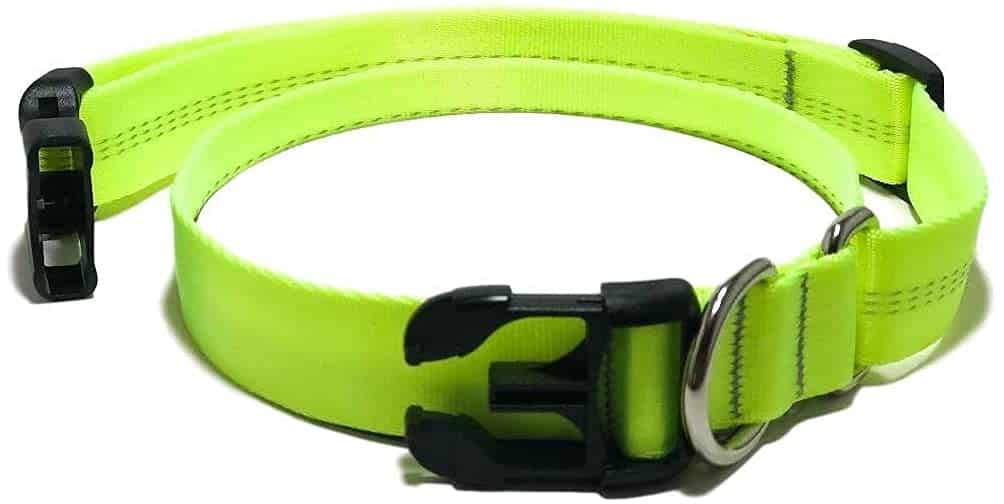
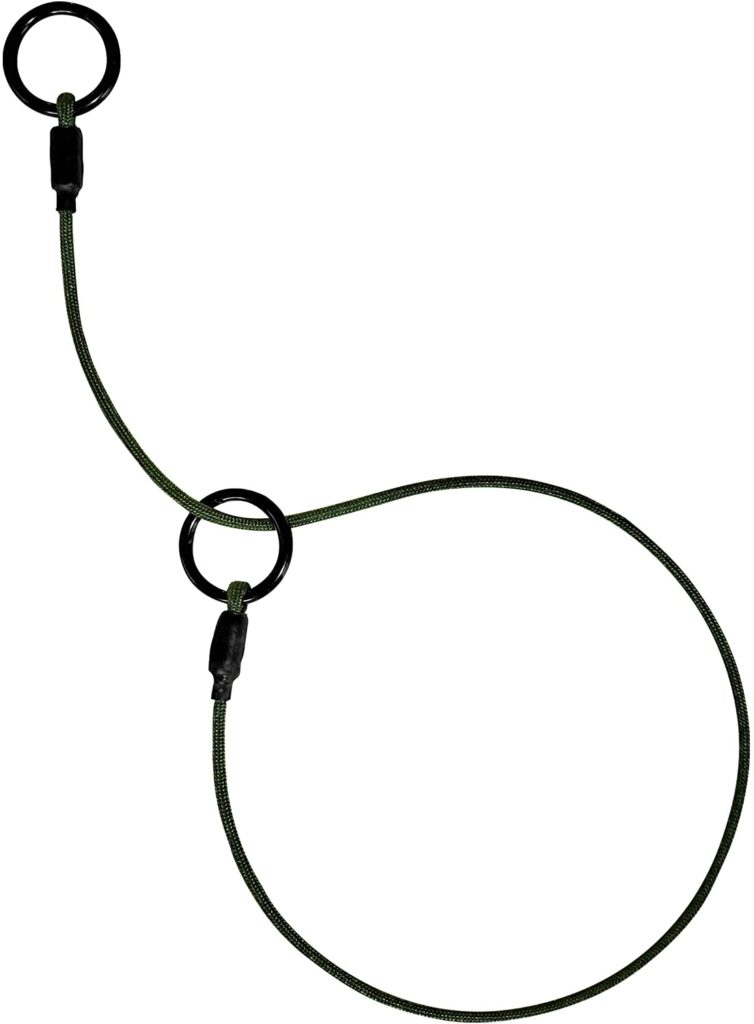
The best retractable leash for a Great Dane
Retractable leashes are dangerous and offer very little control. Most are rated only for dogs under 100lbs, and if your Dane reaches the end and warps the cord around somebody or something, they can cause serious damage to themselves and others.
The only appropriate time to implement a retractable leash for a Dane is on smaller, well-trained Danes that have excellent recall and obedience skills both off and on leash.
A fancy retractable leash with a high weight limit can be helpful for handlers that cannot physically manipulate a proper long leash.
This may be helpful for providing some dogs additional freedom to move and explore, however, we don’t recommend it for walking in high-distraction areas or with Danes that are reactive in any way.
As always, we believe that modern positive E-Collar training is much safer and more humane than any kind of contraption that relies on physical restraint.
The truth is that a properly E-Collar-trained dog of any size can safely be on a retractable leash (to satisfy leash laws), too.
All about the wireless training leash
Did you know that modern technology has brought us the wireless leash?
With modern E-Collar training, your dog can be reliably off-leash in just weeks.
This is very different than traditional shock collar training, as it uses a very gentle muscle stimulation (not zaps and punishment) to communicate in a positive and humane way.
We use and recommend E-Collar Technologies Mini Educator or Easy Educator collars for off-leash training mature (5+ months) puppies and adult Great Danes.
By freeing our dogs of physical restraints, we greatly reduce the chance of orthopedic damage, anxiety, and frustration that can come from tension on a no-pull harness, collar, Gentle Leader, or long leash.
E-Collar trained dogs come when called, can walk politely next to us (even on a leash), and are amazingly responsive-without harsh physical communications.
Thankfully, a wireless E-Collar can provide you with peace of mind that your dog will, with training, come when called, turn away from distractions, stop before running into traffic and return to your side in an automatic sit when asked.
The Best Harnesses for Great Danes
There are times when you need to physically restrain your dog and make sure that your dog’s neck or shoulders aren’t injured by lunging or pulling. This can be necessary for dogs who have Wobblers disease, orthopedic issues, or who are genetically predisposed to those conditions.
For this reason, something ergonomic will be the BEST choice when paired with lots of positive training. It’s especially important to train your Great Dane not to pull, even for short distances, if they are struggling with orthopedic issues.
Choose one with a Y-front, as below:
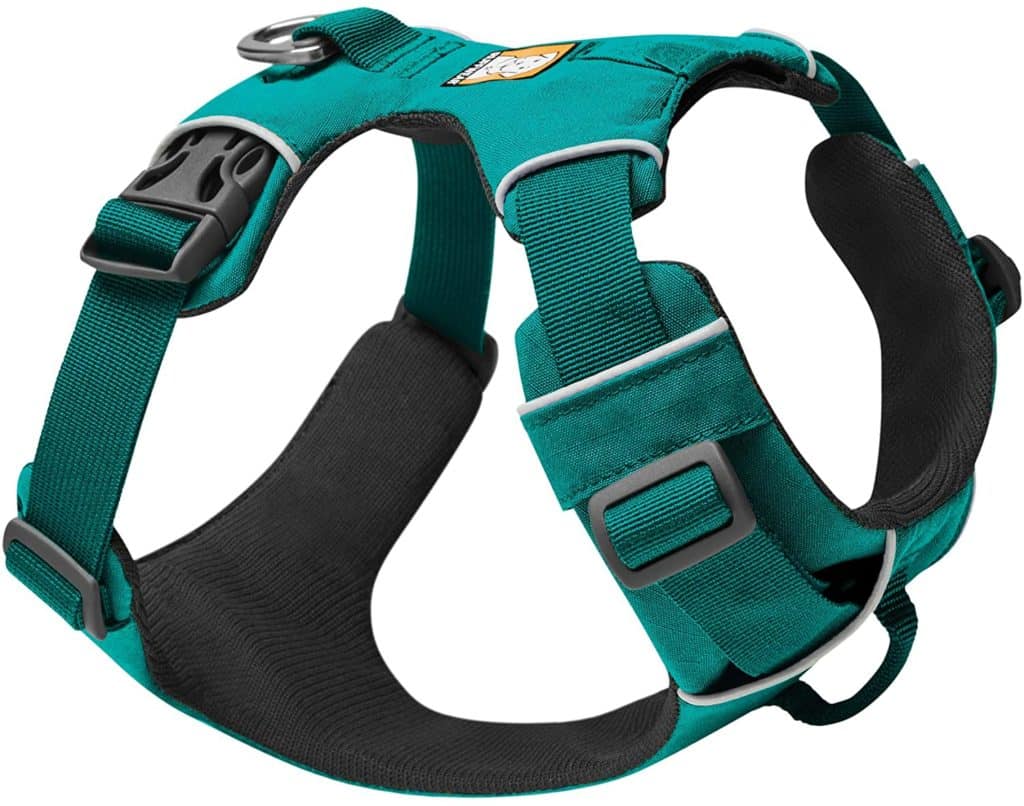
All about ‘no-pull’ and front-clip training tools
We do not recommend the long-term use of ‘no-pull’ or ‘front-clip’ harnesses for giant breed dogs. These tools are obstructive to the shoulders and chest and can cause frustration, pain or even joint damage.
An obstructive harness labeled as a training device for loose-leash walking is built to use pressure, punishment, gait alteration, and behavior suppression and teach your dog not to lunge ahead.
Of course, this can help you accomplish your ‘no-pulling’ goals, but restricting natural movement and gait is not the most humane or ethical choice.
When your dog pulls into the straps, it adds additional pressure to the chest and shoulders. If the pressure is not immediately released, it then forces them to the side so they cannot continue moving forward.
This is hard on joints, and can be damaging to dogs that are predisposed to structural problems (including Wobblers, arthritis, and other joint problems). It is not very effective at the clear communication needed to form good leash skills, either.
Somehow these have been marketed as a ‘positive’ training tool, however, don’t be fooled. Some dog trainers will tell you that it works like a ‘Thundershirt’ to calm anxious behavior and pulling.
What they are really saying, but don’t want you to understand, is that the tool they recommend is physically restrictive and suppressive to behavior. We find this to be particularly alarming.
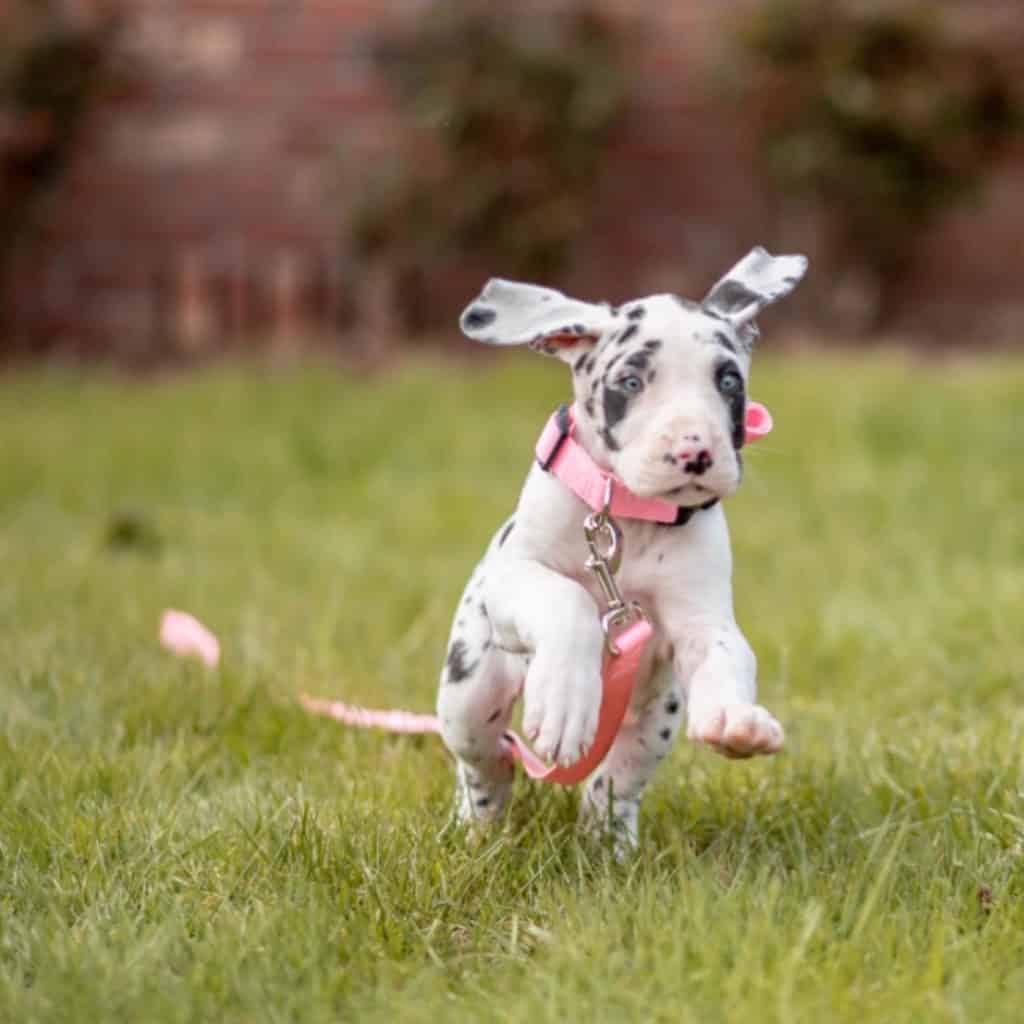
If you do use a restrictive ‘no-pull’ harness for Great Dane leash training, we recommend teaching your dog to respond immediately to the pressure on their chest and turn back to you for a treat and reward. Never leave it on your dog unattended in one, and don’t use it as a tie-out.
Unfortunately, harnesses of most kinds tend to be pretty easy to slip out of as well, and that can be very dangerous for you and your dog, especially if your dog doesn’t have a rock-solid recall and off-leash obedience!
Make sure it is properly fitted, and spend lots of time teaching and rewarding the desired behavior of walking next to you and checking in. Work on recall and obedience as well, every day to establish good skills!
Training Great Danes to walk nicely in a harness
Leash training in a harness is not impossible, but can also require a restrictive long-haul approach (to avoid pulling) that can be frustrating to both you and your dog.
An ergonomic (non-obstructive) harness will give your Great Dane leverage to lunge, pull, and take YOU for a walk. That, as you know, is incredibly dangerous for them and for you!
If you do plan to stick with a harness for loose-leash training, we recommend making sure that you put a lot of time into practicing obedience indoors and off-leash!
Your dog cannot lunge and pull you to the ground if they have solid recall, focus, and engagement skills in other words.
Practice makes perfect; many dog owners who are experiencing frustration with pulling on walks are simply being subjected to natural dog behavior from dogs that need a lot more training and guidance. It’s not stubbornness or dominance.
Great Dane Puppy Leash Training
It is important to start leash training your Great Dane puppy immediately. Don’t wait for puppy classes or pulling to start!
Adult Great Dane dogs who pull, lunge, and act wild on a leash are dangerous; take advantage of the time you have for teaching and reinforcing good behavior and correct leash skills while your puppy is still small. Even if your puppy seems to be ‘calm’ and easy, it’s important to start young!
Some people proudly think that their small, sweet Great Dane puppy is “perfect and doesn’t pull on a leash“, so they don’t put the time into leash training.
These puppies grow into large dogs and learn pretty quickly (usually around 5-6 months) that they can throw their weight around (especially in a harness)!
Don’t be fooled. Your Great Dane puppy may not pull yet, but if you don’t put some time into good walking and engagement skills now, that day is coming.
Good loose-leash training actually starts off-leash! If your Great Dane puppy can walk next to you with no leash at all, they will have a solid foundation for on-leash walking skills.
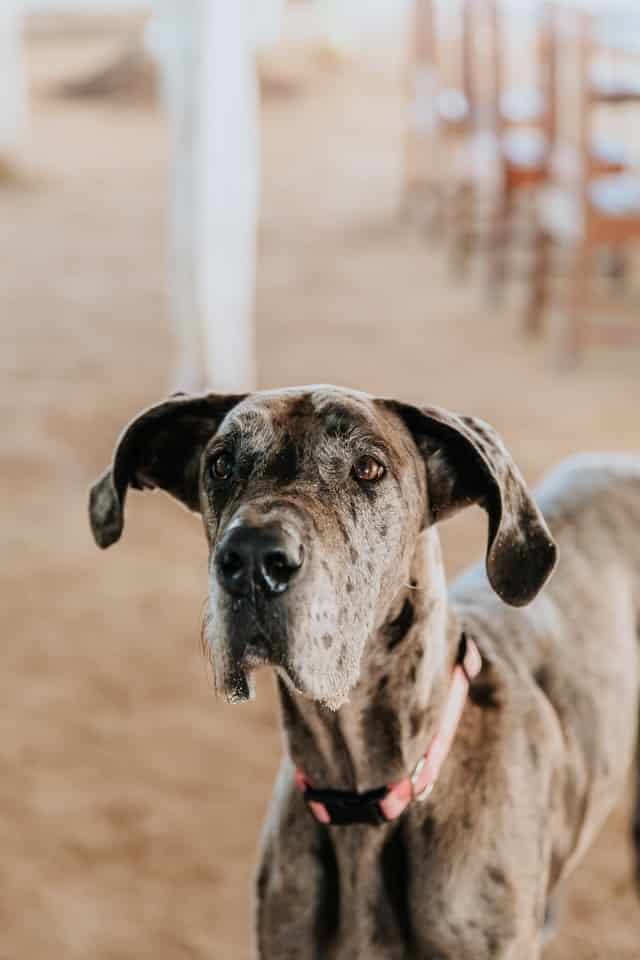
Positive Reinforcement Great Dane puppy Training
Great Dane puppies should always be taught how to walk on a leash using positive reinforcement! Treats, praise, play, and attention, for example, can be used to reward your pup for behaviors that you like.
The more that you reward your dog, the more likely it is that you see your Great Dane puppy repeat behavior that you like to see such as sit, leave it, down, off, and heel.
Practice these skills daily in short 2-3 minute training sessions indoors and in your yard. This habit will help you create an amazing, obedient, calm, and friendly adult Great Dane!
Leash training for Great Danes
Once your Great Dane puppy has spent time around your house learning how to walk on a leash, it’s time to go outdoors and leash train around distractions! In many ways, this may feel like you are stepping backward, but it’s important to start small.
Keep a short leash by neatly bundling the excess into your right hand. Keeping your dog on the left, take a step forward. Mark with a YES and offer a reward.
You may find that your pet will pull harder when outdoors: for these dogs, the environment is just too exciting, or maybe causes a lot of anxiety.
Either way, stop walking and hold your ground. Wait for your pup to release the pressure from pulling you forward. Mark with a yes and then turn and walk in the opposite direction so that your dog follows you.
As always, mark with a YES and a reward when they come to your side and engage with you! Walk ahead with purpose and repeat this process until your dog is very good at releasing tension instead of adding it.
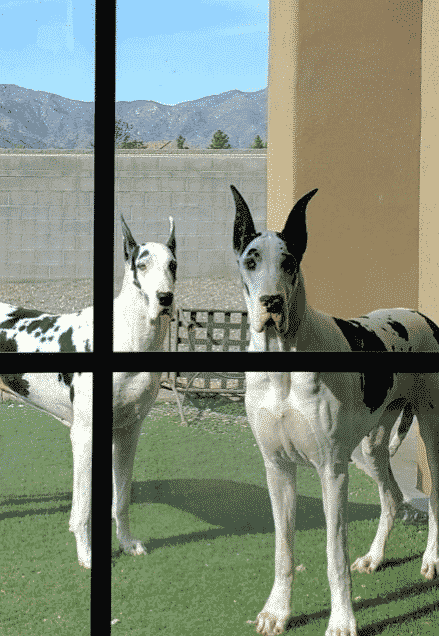
JOIN OUR COMMUNITY
Do you like modern positive+balanced off-leash dog training, science-based information, life with Danes, educated ownership and chatting with other like-minded people?
Join our growing Facebook group!

